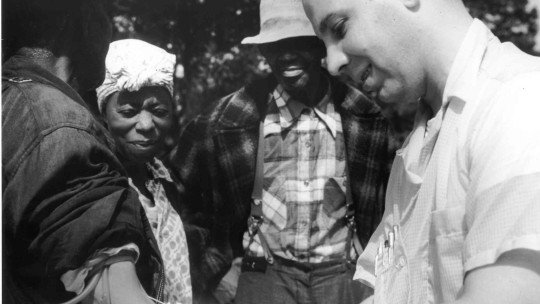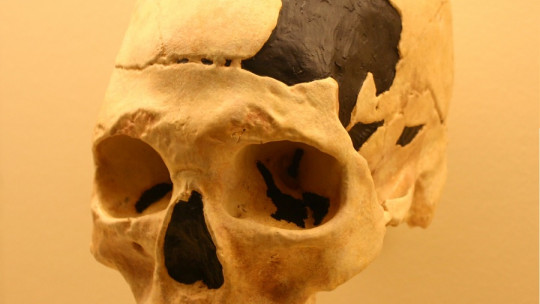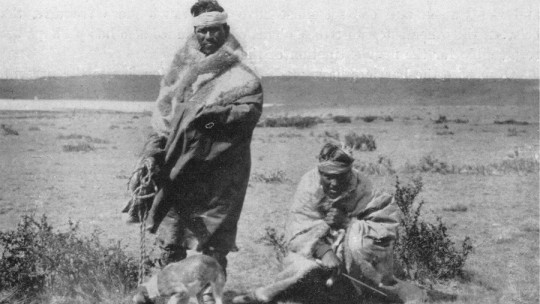Racism is a multidimensional phenomenon which results in the exclusion and restriction of access to different spheres of public life of a person or group of people, for reasons based on color or national or ethnic origin.
José Martín (2003) tells us that, although biogenetically races do not exist, racism as an ideology does. And for this, a long process has had to occur where history and the production of scientific knowledge have mixed and impacted the different forms of social organization. Hence, racism has also established itself as a way of knowing the world and relating to each other.
In this article we will a brief review of the concept of scientific racism , understood as a process that has to do, on the one hand, with how science has participated in the production and reproduction of racism, and on the other, has to do with scientific practices that are permeated by racial biases. In other words, we are referring to both how science has generated racism and the process by which racism has generated science.
Where is the racism?
When we talk about racism we tend to fall into a racist bias, and we immediately think that it is a problem whose existence and definition takes place in North America or South Africa, and we forget or even deny racial processes in other places, for example, in Latin America. , in some places in Europe or in us and ourselves. Not only are these processes denied, but The historical and sociocultural elements that have made them emerge are also hidden
Consequently, the causes that have really produced the phenomena associated with inequality (such as economic, political or social) are canceled or misinterpreted, in favor of an interpretation made directly or indirectly by the dominant classes.
If we take a tour with a historical perspective, that relates the different social, political and economic transformations , we can think that racism is a structural and historical phenomenon. That is, it is a system of elements that are distributed in a certain way to delimit the function and parts of a whole; and that has been established based on specific trajectories.
In the social structure and in interpersonal relationships
Being a structural phenomenon, racism translates into forms of social and cultural relations, mediated by discrimination and subordination of some over others, based on a supposedly fixed difference in possibilities and opportunities due to biological or sociocultural reasons of the group itself. subordinate. Differences that also articulate and reproduce stereotypes, not only of race, but of class and gender
That is, they allow us to evoke certain images in connection with certain words, and not with others, in relation to who we have been taught are “inferior”, “primitive”, “weak” beings, or who are “strong”, “civilized”. ”, “superiors”. In other words, we associate certain acts with certain people or sets of people, and not with others; which also offers us a certain framework of identification and relationships.
Where does it come from? Otherization and colonialism
Racialized groups are frequently instrumentalized for the benefit of those who defend differences from the supposed inferiority-superiority, and in this sense, they are stripped of their condition as “persons” and understood in terms of distancing.
At the base of all this there is a fundamental belief and practice: the existence of a unit (in short, the adult-white-Western man) from which forms of life are valued and even “channeled.” others.”
This process is known as “alterization.” and it consists of naming some people in terms of antagonistic differentiation from a hegemonic point of view, based on a certain idea of “we”.
The problem is that by presenting themselves in terms of antagonistic difference from the hegemonic group, “other” groups are also easily “objectified,” and their ways of life are easily dismissed or replaced by those considered “better.” For this reason, racism is directly related to violence. Violence that has also been one of the constants in the historical process of expansion of Western ways of life and its certain modes of production.
Thus, in the background of racism is the expansion of the worldview and “Western ways of life” , where fundamentally racist forms of contact are established and legitimized. Thus, racism is something that has been part, not only of the history of our societies, but also of their forms of economic production and also the creation of knowledge.
Scientific racism: between knowledge and ideology
Since scientific discourse positioned itself as that which offers us true and valid answers about the world, and about ourselves, its knowledge has gradually been located at the bottom of many theories, as well as at the bottom of different forms of identification and relationship.
Specifically in the reproduction of racism, science has participated directly and indirectly through alleged findings that legitimized visions marked by invisible racial biases. Segos that remained invisible, among other things, because the people who have been recognized for the most part as competent subjects to do science, They have been precisely white, Western adult men
In this context, the research that emerged in the 19th century and that marked scientific production in biology and history as scientific disciplines were especially important. The latter stems from the rise of evolutionary theories, where it was argued that the human species has changed after a complex genetic and biological process, where it is possible that some people have evolved “more” or “less” than others. Which also validates the principle of natural selection applied to human beings, along with the idea that among each other there are a permanent competition for survival
A series of supposed demonstrations are then deployed about the existence of racial hierarchies within the human species; demonstrations that soon settle in the social imagination, both at a micro and macro-political level. That is to say, it not only impacts how we think about “ourselves” on a daily basis, how we see “others” and what ways of life are “desirable”; but that have also become visible in the wars of colonial expansion where the extermination of the lowest levels of said hierarchy is justified.
Not only that, but the scientific confirmation of racial inferiority ended up having a direct impact on the ways of constructing and imparting formal education, of politically and legally organizing social participation, economic management and opportunities for each group, etc.
Biological determinism and IQ
Biological determinism was positioned in this way as a social philosophy. And one of the most contemporary processes where this becomes visible is in research on innate intellectual characteristics, based on the construct of the IQ, understood as a number capable of linearly classifying people, whose basis is mainly genetic and immutable.
Among other things, this had an impact on the reduction of possibilities for social participation and inequality of opportunities for those who are outside the average. An issue in which class and gender biases were also made invisible.
It was like this because the white Western subject was taken as a model under heritability arguments. Many studies showed that, for example, the black population had a supposedly lower IQ than the white population.
In these studies and under the arguments of biological determinism, issues such as the difference in opportunities that exist for each population in a specific sociopolitical context were omitted, and for this reason, the differences are not addressed as a problem that is structural, but as if It was an immutable characteristic of a certain group of people.
Science: a practice of knowledge and power
Menéndez (1972) speaks of scientific racism in terms of falsified relations between science and racist ideology, where in addition, if we follow Foucault, we can see that scientific practice has not only been a practice of “knowing”, but of “ power”, which means that has direct effects on what it studies and validates
The above becomes even more complex if we add the following paradox: although its effects are concrete and visible, science has traditionally been divided between the production of knowledge in laboratories and specialized journals, and what happens on a daily basis. , in social reality.
After recognizing this paradox, racial biases in the production of knowledge, and their consequences, have been especially assumed and criticized after the Second World War. It was specifically when the extermination occurred from one geopolitically European group to another geopolitically European group, based on justifications of biological superiority-inferiority
However, even when many scientists made it known that the theories were strongly marked by racial biases, in many cases there was no possibility of stopping the violent relations that were being legitimized. It is so because everyday life often escapes science and the political value of research results that question racist postulates has fallen short.
In short, racism as a system, ideology and form of relationship offers a coherent vision for the mode of production (both economic and knowledge) on which our social system is based at a global level. It is part of the conception of the world where a rationality of violence is incorporated, and as such, it offers a series of planning and techniques in which scientific activity has had no minor participation.









